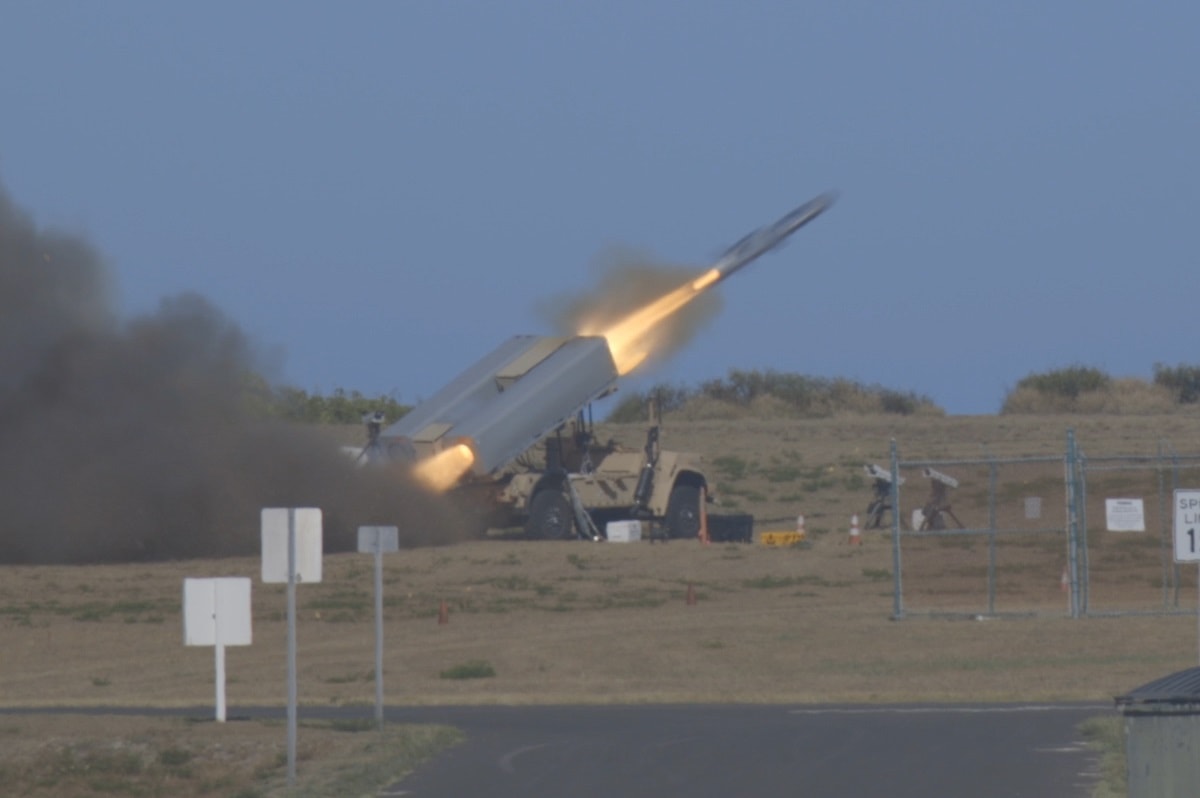China and Russia have continued to tout the capabilities of their anti-warship missile systems. Russia has conducted multiple tests of its 3M22 Tsirkon (Zircon), while China has poured money into the development of its DF-21D medium-range ballistic “carrier killer” missile. The United States military has also been working to develop such anti-ship weapons, and this week the Navy/Marine Corps Expeditionary Ship Interdiction System (NMESIS) successfully hit its target in support of Marine Corps Forces, Pacific, during Large Scale Exercise 21 (LSE 21) on Sunday.
According to Marine Corps Systems Command, the exercise showcased the U.S. maritime forces’ ability to deliver lethal, integrated all-domain naval power. The NMESIS could provide the Marine Littoral Regiment with ground-based anti-ship capability that could facilitate sea denial and control, while also persisting within a potential adversary’s weapons engagement role. The recent demonstration of the platform at LSE 21 provided such a venue for the program team to validate some of those concepts.
“This scenario is representative of the real-world challenges and missions the Navy and Marine Corps will be facing together in the future,” said Brig. Gen. A.J. Pasagian, commander of Marine Corps Systems Command. “This exercise also provided an opportunity for us to work alongside our service partners to refine Force Design 2030 modernization concepts.”
Two Years of Development
Development of the NMESIS began about two years ago, and this marked the first time it was used in a live-fire demonstration against a sea-based target – in this case, the decommissioned U.S. Navy frigate Ingraham, which was positioned off the coast of Hawaii. The NMESIS was mounted on a Joint Lightweight Tactical Vehicle Chassis located in Hawaii more than 100 nautical miles away.
Each of the two missiles from land struck the warship, which was positioned off the Hawaiian island of Kaua’I at the U.S. military’s Pacific Missile Range Facility.
Because the system is not yet fielded capable, engineers from the Marine Corps Systems Command actually managed the fire control piece of the system during the exercise. Several Marines did practice maneuvering the system and validating the system’s interoperability with their Naval and Air Force partners.
“This week was very successful,” added McPherson. “In addition to the two live fire shots that hit the target, we also successfully deployed the system aboard the Marine Corps’ primary transport systems, the C130 and LCAC.”
MCSC also announced that it is currently developing and fielding new anti-surface warfare weapons capabilities, including NMESIS, which are no on pace to support Force Design 2030 objectives. These new capabilities contribute to the Fleet’s ability to achieve sea control, sea denial and defense against adversary amphibious force missions. This is part of a transformation that the United States Marine Corps is undergoing as it moves away from being a “second Army.” Last year, the USMC began to retire its tank force, as it seeks to return to its amphibious roots.
This transformation could make it a nemesis of America’s naval adversaries, and the NMESIS could soon be a powerful new weapon in its arsenal.
Peter Suciu is a Michigan-based writer who has contributed to more than four dozen magazines, newspapers and websites. He regularly writes about military small arms, and is the author of several books on military headgear including A Gallery of Military Headdress, which is available on Amazon.com.

